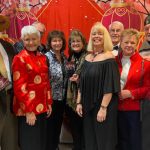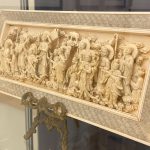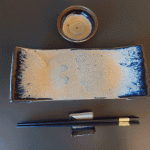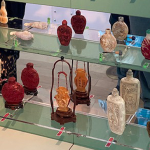


Mary Hulton Phillips, Founder of The Maridon Museum, was an avid collector of many forms of art. Her interest in, and collection of Asian art, were the driving forces in establishing this museum.
We are pleased to present this exhibit of 33 ivory objects. Many of Mrs. Phillips’ pieces have been tucked away in storage and never seen.
Gazing at this collection you will experience the elegance of magnificently carved floral baskets and birds, the excitement of Samurai battling on a bridge, offset by the engaging smile of a Happy Buddha with 11 children, depictions of everyday life, elephants on the march, scholars and goddesses and the whimsey of a snail who takes center stage.
Please stop by to enjoy these exquisite objects.
In 2005, Mary Hulton Phillips, Founder of the museum purchased a collection of stunning antique Japanese Dolls. The collection was known to have been displayed in various museum exhibits.
Many of these dolls required conservation. Rhonda Wozniak, Objects Conservator from Pittsburgh, Pa., was engaged in the project. After months of work under the skilled hands of Ms. Wozniak, the dolls emerged in 2008 to take their places, once again, as the focus of this exhibit celebrating the annual “Children’s Day” (Tango- No-Sekku) Festival.
The Samurai were revered guardians of the people and next to the imperial family in the Japanese social strata. Samurai Dolls were first created during the Edo Period (1600-1868). They represent the heroic figures of folk tales and Japanese literature. Other decorations for the Children’s Day celebration include Iris leaves, symbolic of Samurai swords, and Koi-Noboru (carp-like streamers).

A new form of art has arrived at The Maridon Museum Gift Shop. These beautiful works of art are exclusive pieces inspired by the Asian culture of the museum and crafted by Joyce Kristoffy-Hewlett.
Ms. Hewlett, now retired, taught art and pottery at the college level for 25 years. She is a graduate of Cranbrook Academy of Art in Bloomfield Hills, Michigan (BFA) and Rutgers, The State University at New Brunswick, N.J. (MFA).
Hewlett works out of her home studio and she prefers to do one- of- a kind pieces. Most of her objects are wheel thrown, some are hand built, and she makes her own glazes. They are dishwasher and microwave safe.
Her works have been exhibited nationally and internationally in galleries, shows, and museums.
Come to our gift shop to purchase these unique gifts:

The Maridon Museum Snuff Bottle Exhibit was donated in Loving Memory of James T. “Jim” Sweeney and a dedication plaque can be seen next to the exhibit. If you’ve never seen our snuff bottle exhibit, let us illustrate the purpose and beauty of these tiny works of art for you.
Snuff bottles originated from China during the Qing Dynasty (1644-1911) where they were used to hold powdered tobacco. Initially, these bottles were made for the emperor and the court, but eventually expanded to the public. Snuff was understood to have healing powers for common illnesses, so while smoking tobacco was illegal, using snuff was permitted.
It is clear the beauty of snuff bottles supersedes their usefulness! The museum’s collection includes bottles made from hornbill, jade, ivory, cinnabar, amber, glass, enamel, turquoise, porcelain, mother-of-pearl, opal, jasper, hardstone, cloisonne, lapis, quartz, and agate. The sizes are usually around 1 ½” to 3” with a couple as tall as 6”. The variety of shapes and images are extensive and focus on nature, especially mountains and water. These images appealed to all who lived in the cities. Owners of these bottles could be soothed by not only the contents but also by viewing the natural scene on them. Some designs focus on the natural shape of the medium while others reflect the important Chinese themes associated with nature. For example, a gourd design reflects on longevity, while goats coupled with the whirling sun symbolizes the beginning of a great future.
People collect snuff bottles even today for their history and their art. You can find such objects at auction houses such as Christies. Click here for an article from Christie’s talking about the five things to know about collecting snuff bottles.
Please enjoy the photo gallery of some of the museum’s snuff bottle collection so you can appreciate the beauty of these tiny works of art. Better yet, come see the full exhibit for yourself. If you would like, you can call ahead to schedule a docent to learn even more about our snuff bottles as well as the rest of our collection.

The Maridon was featured in Huffington Post’s article “55 Best Lesser Known Art Museums, Artist Studios, and Art Centers in Northeast USA.” Come visit us to find out just why Malerie Yolen-Cohen, Huffington Post Contributor, wrote “It’s a knockout museum worth a drive from anywhere. The Asian art collection at The Maridon is fascinating on many levels – the most elemental being its stunning beauty and fine craftsmanship.”
Click here to read the article.